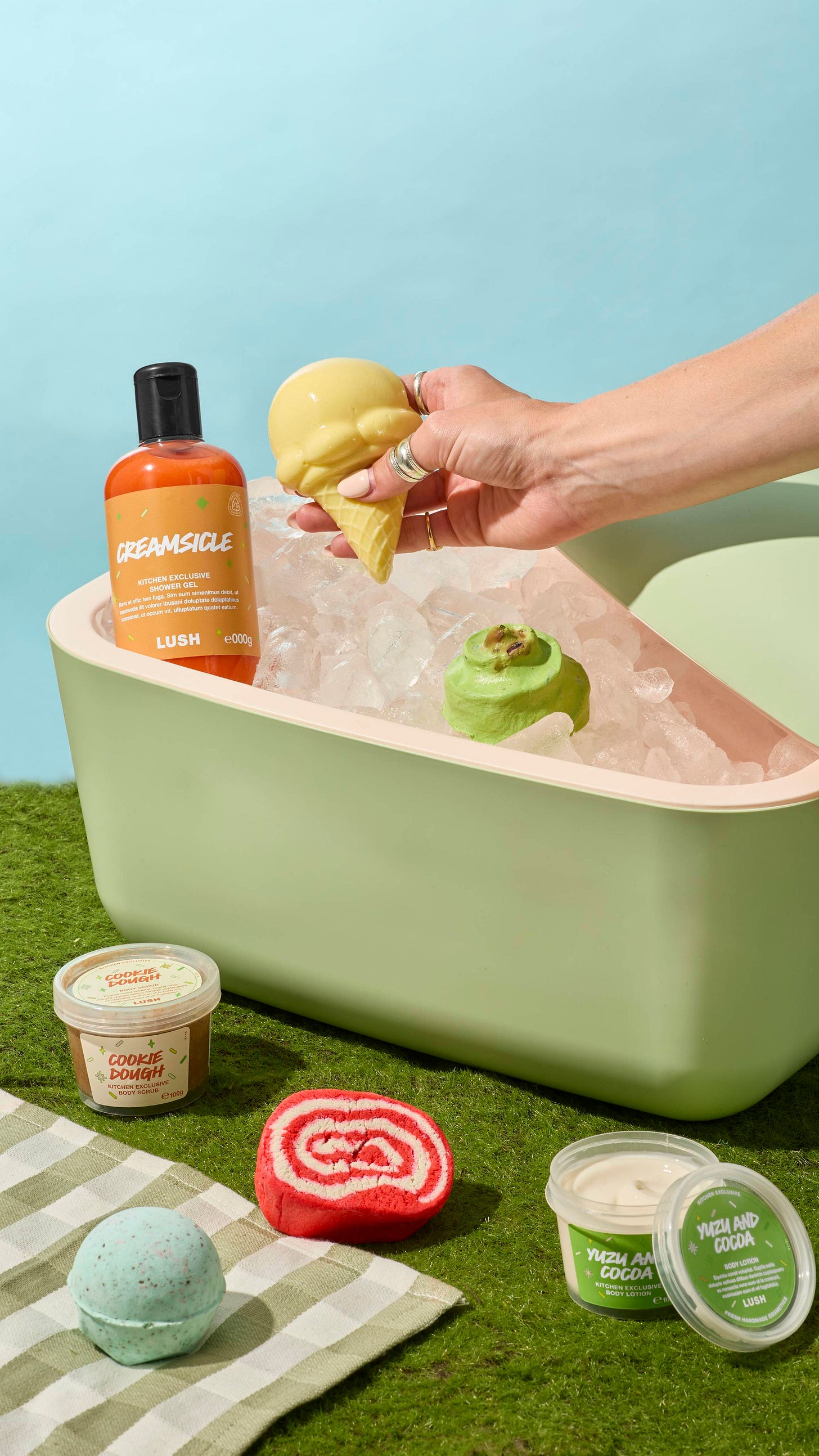What do beauty brands and your fridge have in common? 🫐 🧁 🍒
Let's talk about the Foodification of Beauty
Beauty brands have been raiding the fridge lately (and no, not for lunch). From cherry-cola lip oils to cereal-scented shampoo, the line between skincare and snack aisle is officially blurred.

Lush has long been the pioneer of food-inspired beauty, with their face masks made from oats and blueberries, and body scrubs that smell like candy floss. But they’re no longer alone. Glossier’s Birthday Balm smells like frosting. Rhode’s Peptide Lip Treatment comes in flavours like salted caramel. Even skincare heavyweights like Drunk Elephant infuse products with marula oil and smoothie-like textures.
There’s a deeper, psychological appeal behind this trend. Food is emotional. It’s nostalgic, comforting, sensory. The smell of vanilla? Your mum’s (or grandma’s) kitchen. A glaze that looks like jam? A delightful nod to your childhood. Brands are tapping into our primal relationship with food. Not just how it tastes, but how it makes us feel. And by serving it up as skincare, they’re creating experiences that are fun, playful, and irresistible.
This trend shows how brands are designing for more than skin. They’re crafting multi-sensory experiences that feed the soul and the algorithm. Because let’s face it: a serum that looks like strawberry milk is going straight on TikTok.
So go ahead. Swipe on the gloss. (Just don’t actually eat it).
Read more
🍒 Beauty Matter have an in-depth article on the Foodification of Beauty
🍰 Socially Powerful are picking out notable marketing campaigns around this theme
🍭 BrandVM is exploring the psychology behind food associated trends






